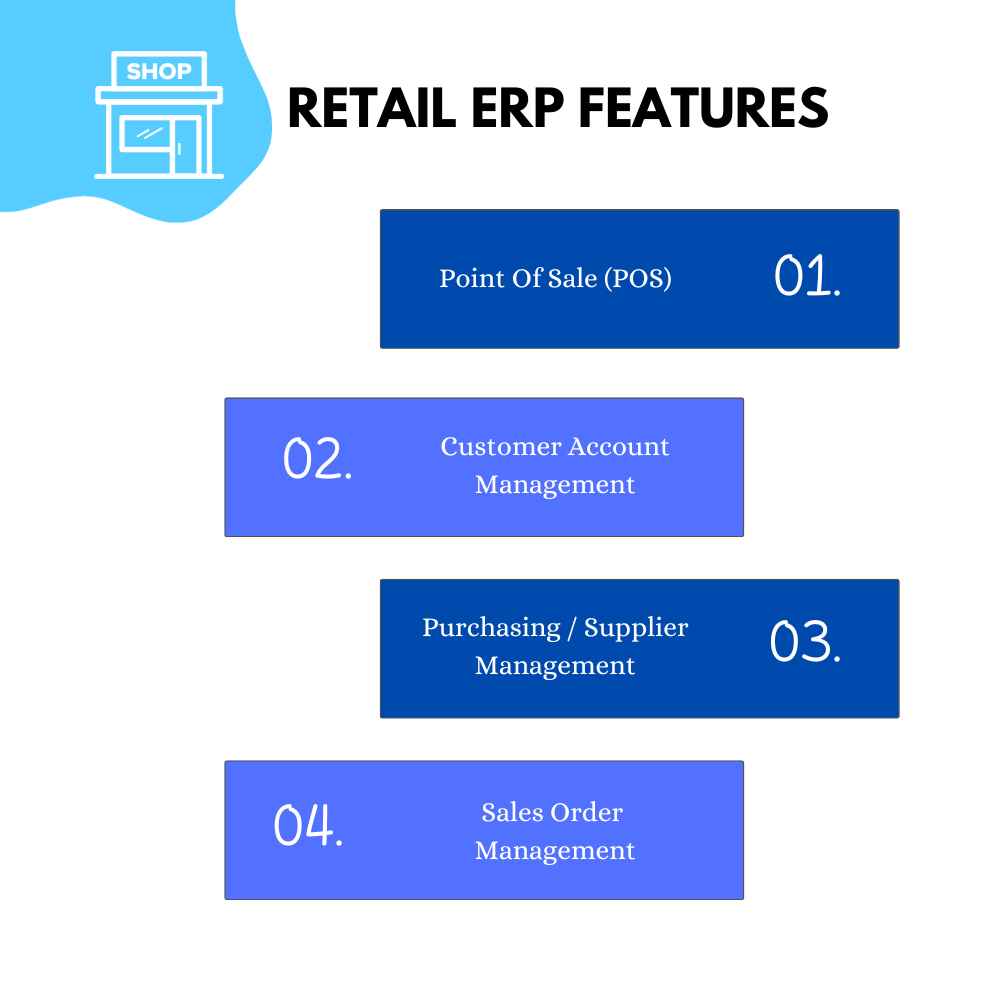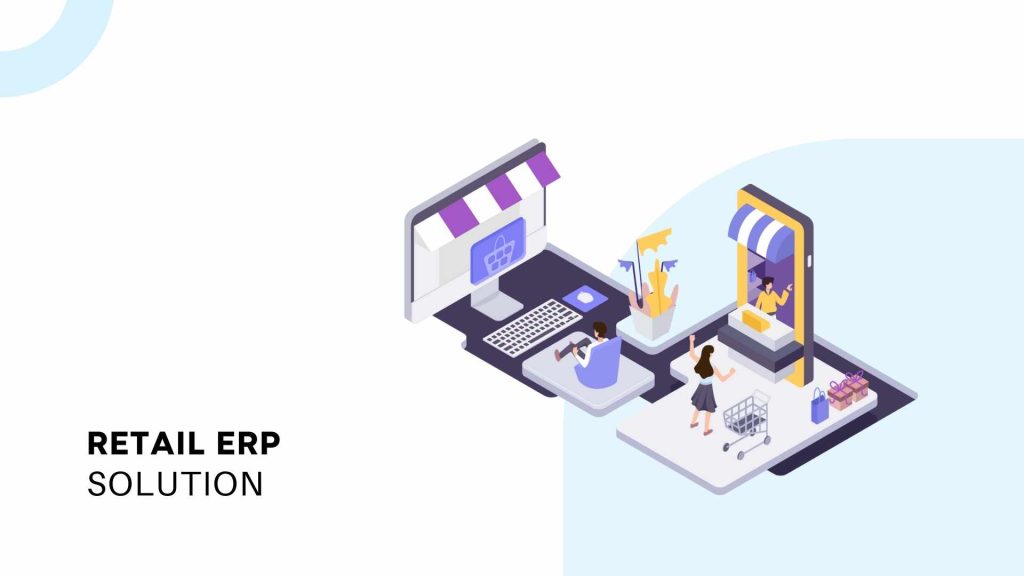Welcome to the pulse of innovation in the retail industry, where trends unfold and consumer behaviors shape the future. From the ever-evolving landscape of e-commerce to the art of in-store experiences, the retail world is a dynamic tapestry of innovation and adaptation. We explore the use cases, disruptions, retail businesses.
ERP for Retail – The Use Cases!
Improved inventory management
Improved inventory management in retail through ERP systems allows for real-time tracking of stock levels, reducing instances of overstocking or stock outs. Retailers optimize their inventory by integrating sales data and forecasts, minimizing losses due to excess inventory or missed sales opportunities.
Streamlined supply chain operations
Streamlined supply chain operations leverage ERP in retail to synchronize the flow of goods, enhancing communication among suppliers, manufacturers, and distributors. This integration ensures efficient order processing, reducing lead times and operational costs while maintaining a seamless supply chain.
Personalized customer experience
Personalized customer experiences are enhanced by ERP systems that gather and analyze customer data. Retailers can tailor promotions, recommendations, and interactions based on individual preferences, fostering stronger customer relationships and increasing brand loyalty.
Improved data analysis
Improved data analysis facilitated by ERP in retail enables comprehensive insights into sales trends, customer behaviors, and market demands. Analyzing this data aids in making informed decisions, refining strategies, and forecasting future trends, empowering retailers to stay competitive.

Challenges In Implementation Of ERP in Retail Industry
Integration with existing systems
Integration with existing systems poses a major challenge in ERP implementation for retailers, as it requires seamless incorporation with legacy software and databases. Ensuring compatibility and data consistency across platforms without disrupting ongoing operations is critical for a successful transition.
Data quality and accuracy
Maintaining data quality and accuracy during ERP implementation is vital, as discrepancies or errors can lead to flawed insights and operational inefficiencies. Cleaning and migrating data while ensuring its reliability is a complex task that demands meticulous attention to detail.
Training and change management
Training and change management are key hurdles, as adopting new ERP systems necessitates educating employees on new processes and tools. Managing resistance to change and ensuring smooth transitions without disrupting daily workflows requires comprehensive training and a supportive change management strategy.
Cost
Cost implications associated with ERP implementation often present a significant barrier for retailers, involving expenses for software licenses, customization, hardware upgrades, and ongoing maintenance. Balancing the investment with the expected ROI can be a substantial challenge for businesses, especially smaller retailers with limited resources.
Security and privacy
Security and privacy problems arise due to the centralized core of ERP systems, consolidating vast amounts of sensitive data. Ensuring robust security measures to safeguard against cyber threats and maintaining compliance with data protection regulations are crucial considerations in ERP implementation for retail, demanding stringent security protocols and continuous monitoring.
Steps for Successful Implementation of ERP for the Retail Industry
Set Clear Objectives
Setting clear objectives is paramount for successful ERP implementation in retail. Define specific goals: optimizing inventory management, enhancing customer experience, or streamlining supply chain operations. These objectives serve as guiding principles throughout the implementation process.
Choose the Right ERP System
Choosing the right ERP system tailored to retail needs is crucial. Evaluate systems that align with your business requirements, scalability, and future growth plans. Consider functionalities such as inventory management, CRM, and analytics that cater to retail operations.
Plan the Implementation Process
Planning the implementation process involves creating a detailed roadmap. Outline timelines, allocate resources, and identify potential risks. A phased approach, starting with essential modules before expanding, can mitigate disruptions and ensure smoother adoption.
Engage Employees
Engaging employees throughout the implementation journey is essential. Provide comprehensive training, communicate the benefits, and involve key stakeholders in decision-making. Nurturing a culture that embraces change and enables feedback fosters ownership and commitment to the ERP system’s success.
Future of ERP for the Retail Business
Greater Emphasis on Data Analytics and Business Intelligence
The future of ERP in retail will witness a greater emphasis on data analytics and business intelligence. Retailers will leverage advanced analytics tools to extract actionable insights from vast volumes of data, enabling them to make informed decisions and anticipate market trends with precision, enhancing their competitive edge.
Integration with Emerging Technologies
Integration with emerging technologies like AI, IoT, and machine learning will redefine ERP systems in the retail sector. These technologies will optimize processes, automate tasks, and enable predictive capabilities, revolutionizing inventory management, customer experiences, and supply chain efficiency.
Cloud-based ERP Systems
Cloud-based ERP systems will dominate the future landscape of retail by offering scalability, accessibility, and cost-effectiveness; these systems will empower retailers of all sizes to leverage robust ERP functionalities without the constraints of on-premises infrastructure, fostering agility and rapid innovation.
Greater Customization and Flexibility
The future of ERP in retail will prioritize greater customization and flexibility. Tailoring ERP solutions to specific business needs will become more seamless, allowing retailers to adapt swiftly to evolving market demands and unique operational requirements, ensuring agility in a dynamic retail landscape.
Conclusion
In conclusion, Acumatica ERP is a transformative force within the retail industry, offering a comprehensive suite of tools to elevate operations. Its robust inventory management capabilities and real-time insights empower retailers to optimize stock levels, reducing costs and minimizing stock outs.
Integrating sales data and forecasting bolsters decision-making, enabling retailers to anticipate demand and tailor their strategies accordingly. With its adaptable and scalable nature, Acumatica ERP fosters agility, allowing retailers to swiftly adapt to market changes and innovate, ultimately enhancing efficiency, customer experiences, and overall competitiveness within the dynamic retail landscape.

Vijay comes with a vast experience in ERP and enterprise solutions space with about 20 years of experience in various packaged application like Acumatica, SAP, Orion, Salesforce.com, SugarCRM and, SalesLogix.

